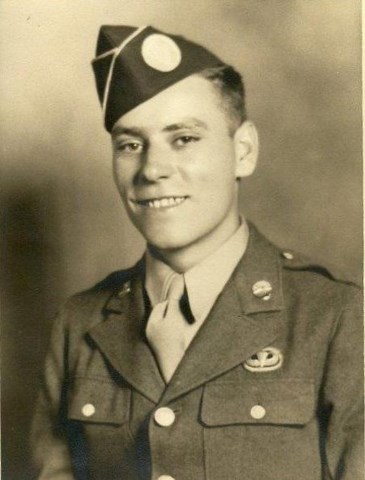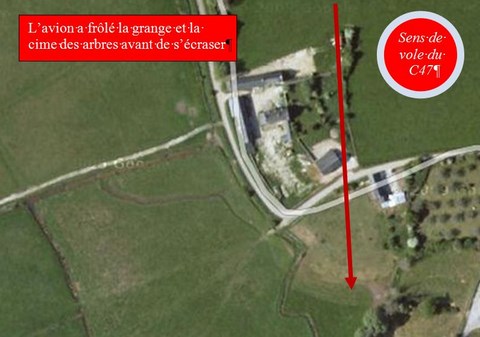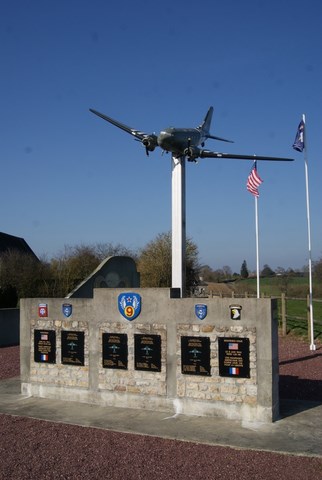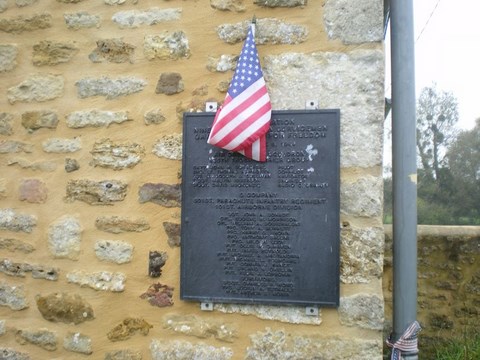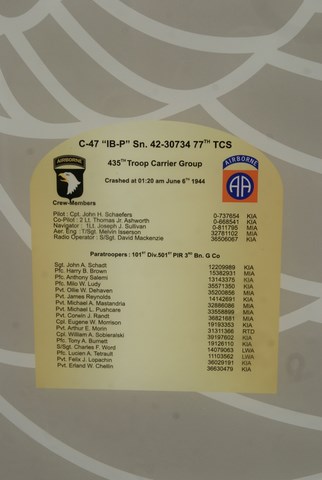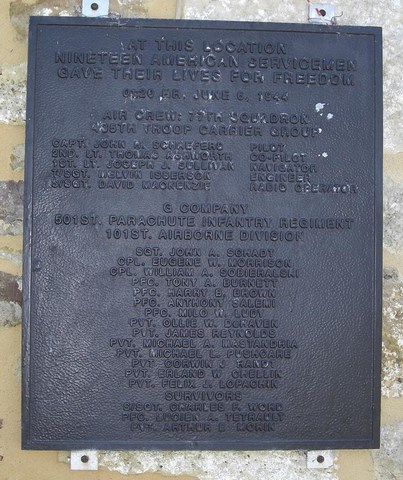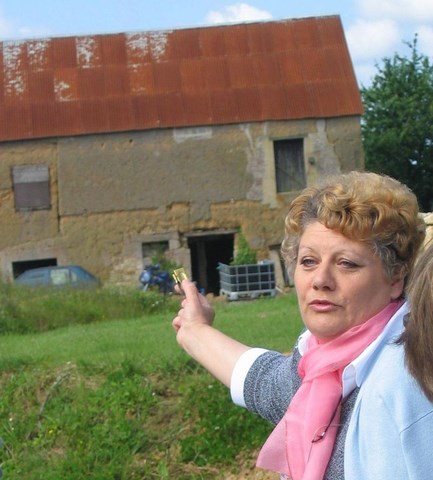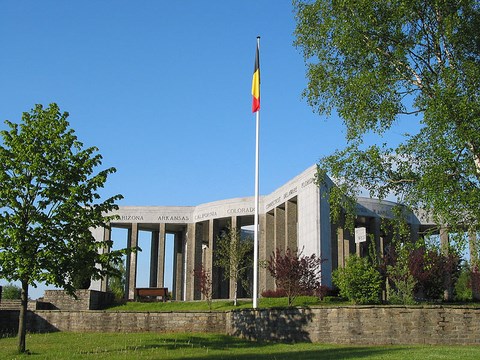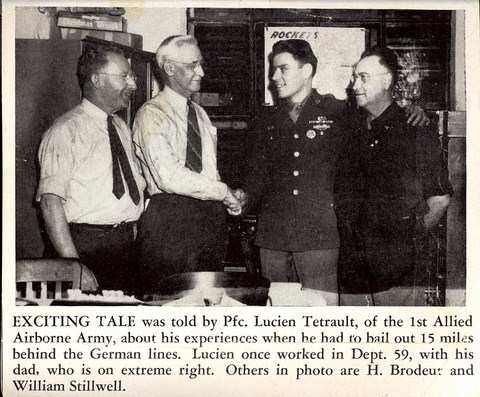Lucien (Lu) Tétrault, War Hero (by Pierrette Brière)
Birth and family
Lucien Anatole Tétrault is the son of Anatole Tétrault and Florida Colette. He was born on march 25, 1920 at Waterbury in the US and is baptised on the 28th at the St. Ann’s Church of the community.
As many other Quebecers family, their parents immigrated to New-England. First on a farm in Vermont, than at Waterbury where their establish themselves. Lucien grew up in this small town of Connecticut with hi solder sister Lucile and is younger one Ida, who become the family historian. His mother gave birth to three other children but they died as infant.
Lucien went to a french catholic school and completed his 10th year at the Leavenworth High School of Waterbury. He put an end to his study the following year in order to financially contribute to his family. He involved himself into the Civilian Conservation Corps (CCC), a program helping family in difficulty during the big depression while protecting the natural resources. To men between 18 and 25, single and unemployed, they provided work, food and a salary, part of which (25$) was sent to their family. Lucien did public work in Colorado. During his days off, he visited the Mountainous regions and took any pictures of the canyons; this experience probably helped reinforced his passion of big space and fresh air.
Around 1938, he leaves the CCC and goes back to his family town in Connecticut where he finds a job in a watch factory.
Marriage
During vacations with his friends at lac north form the state of New York he met Esther Morello. This young woman from Italian descent grew up in an Italian neighborhood of Brooklyn (New York); her father was working there as a tailor and mother Morello was taking care of his family, always in their mother land language. The parents and their five children left Calabre to immigrate in America and Esther is the only one not born in Italy.
A reciprocated attraction is what marked the beginning of their relationship. At 22 years old, Lucien married Esther who was 20 years old. The wedding was celebrated May 3, 1942 at Brooklyn close to the Morello family house.
In November 1942, Lucien leaves his 3 years old job at the Waterbury Manufacturing Company.
Military life
He was voluntarily enlisted in the America army December 8, 1942. Lucien Tétrault was part of the 501st Parachute Infantry Regiment (PIR), 101st Airborne Division. He started his training at Camp Toccoa (Georgie). After finishing his training on many different base camps, he finally leaves for England in January 1944.
The D-Day
The D-Day, June 5, 1944 at 22 h 30 the parachutes from the G company of the 3rd Battalion get into plans designed for the Mission Albany; they are going to drop men in Normandy five hours before the landing. At 23hr, the 474 de Welford station (United Kingdom), airmen start the engines, the flight starts at 23 h 35 and, 97 minutes after, the squadron cross the French coast. According to Lucien, the target of his company was Vierville-sur-Mer, north east from Omaha Beach.
At 1500 feet, they suddenly see an important cloud formation, the need for radio silence being respected; this information could not have been communicated to the group. The importance of the cloud formation adding to the enemy fires makes the flight really difficult and dangerous.
The plans are flying the Picauville (Normandie) region and some minutes before landing, the German anti-aircraft artillery opens fire. The C-47, where Lucien was is hit at the nose than at the rear. The pilot cabin exploded, killing five members of the team. The 17 parachutes attached to the static line, ready to jump, are thrown down and some are killed and injured. The plane nose-dived, smoke comes and flames get into their space. The sergeant Charles Word follows the order and yells « Let’s go » and jumped first. Lucien Tétrault was second. Even with his injuries, Arthur Morin painfully get to the exit, passing through 12 of his dead friends, and jump as well.
During his descent, Lucien sees the plan crash through the trees minutes later. On June 6 at 1 h 20 and about 500 meters south of Picauville, in the small town of Clainville, the fire burns the plans and his lasting flight members. The house of the Simone family is spared by some miracle.
The three survivors regroup once on the ground. They get in contact with two french family, Truffaut and Lebruman; Lucien french proficiency considerably help the communication. Charles Word leaves east while Tétrault and Morin are brought to the orange stone barn of the Lebruman family who gives them food.
During the day, Charles Lebruman goes where the plane crashed where 16 unidentifiable burned buddies lie. He retrieved 9 nameplates he then gave to Lucien Tétrault who was greatly upset.
After a couple of days hidden in the barn ad knowing their presence puts their host in danger, the two men choose to leave for the beaches. They were able to escape a meeting with the enemy during which Lucien is hit by a fir arm. They finally reach the American lines alive with the help of a young boy who found them in the woods. Lucien is tended to on the battle field than hospitalised in England
Battle of the Bulge
After almost two months of fighting, the Germans were driven away and Bastogne is freed. For this victory, the fighters received the first Presidential Unit Citation ever awarded to an entire division; this decoration is awarded for extraordinary heroism in combat against an armed enemy. In extremely difficult conditions, they carried out their mission with courage; many of them have even lost their lives. To show their gratitude, the Belgians erected a huge monument in Bastogne on the Mardasson hill. At the heart of this memorial, one can read a Latin sentence expressing the Belgian people remember their American liberators. On July16, 1950 the chairman of the opening ceremony said: "May this inscription in stone, also to be remembered." Lucien Tétrault is one of the liberators we do not want to forget he is one of these heroes.
Lucien leaves the Lowell General Hospital (Massachusetts) March 31, 1945; he was discharged with honors at Fort Devens (Massachusetts) May 14, 1945, which ended his military career.
Back to civilian life
Returning to civilian life, Lucien goes back to Brooklyn (New York) to his wife Esther and the Morello family. He found work as a machinist. Life resumes its course and two sons coming soon after complete his family.
Lucien Tétrault has a real entrepreneurial spirit. With his brother, Max Weiss, he started a manufacturing plant in the field of jewelry named Lu-Max manufacturing Company in which he exercises has the Machinist. After the plant in New York, they are building a studio in Springfield (New Jersey) and supply several business areas of New York and New England.
In 1950, Lucien left Brooklyn and moved to Springfield, where he built a small ranch style home. Esther maintains close ties with his sister Connie and Lucien shares interests with his brother in law Joe Morello. The families meet regularly; they accumulate precious memories of happy camping trips and memorable fishing adventures in boats managed by the resourceful companions.
After 5-7 years of partnership with his brother, Lucien decides to sell its interests to seize new opportunities. Looking for a way to properly support his young family in a different area from his previous achievements, he invests in a newspaper delivery service in Asbury Park (NJ). In 1957, he bought a ranch -style house in Neptune (New Jersey), where the family moved in.
Lucien was not particularly interested in the new company, but the income it generates suit him. He puts his skills to the company, which soon experienced significant growth and developed an excellent reputation for reliable and efficient service. Always looking for new experiences and ways to generate additional income, he bought a used press and starts printing its own invoices and sell blank invoices to other companies. He succeeded in financing the cost of education for his sons respectively attending Rutgers University and Georgetown University.
Widowhood and remarriage
It was at this time that, following a seizure while driving, Esther got diagnosed with a cancerous brain tumor. She was transferred to a hospital in New York for surgery and treatments that leaves her half-paralyzed; she is confined in the hospital for several months. Despite his work, Lucien covers the distance several times a week to visit his wife; this test is very difficult for him and his sons aged 11 and 13 years old. Back at the house for a period of convalescence, Esther died January 7, 1962 at the age of 39.
In 1964, Lucien marries Jacqueline, a native of France and mother of two children. The new couple moves into a more spacious home meeting the new family needs. After about eight years together, the couple divorced in 1972.
Retirement
In 1980, Lucien sells the newspapers delivery service he directed for 23 years and is retiring. On board of a recreational vehicle, he traveled for a year throughout the United States with his faithful dog Princess. In the 20 years following the tour, he lives alternatively between his home in Florida in the winter and visits to his family living north in the summer. He always chooses campgrounds lake where he can get in the water a small boat and catch some fish for his meal.
Known affectionately as Lu, he is adept of outdoors, fishing and camping; his exceptional landscaping makes the envy of its neighbors. He is recognized for his phenomenal memory, ability to tell his many experiences, his interest in sharing his memories, his ability to discuss current issues as well as for his talents in chess, skittles and iron.
In 2003, health problems prompted him to leave Florida to settle permanently in Connecticut where he holds several family meetings and particularly on Father's Day. Lucien is filled by the presence of his children, grandchildren and great- grandchildren. In 2010, a surprise party was organized to celebrate its 90th anniversary; on this occasion her daughter Jessica presents a retrospective of the life of Lucien, a joyous and touching moment for all participants
Death and descendants
After a long fight against diseases, including heart, vascular and renal problems, Lucien Tétrault died peacefully on August 11, 2011 at the age of 91 after a very busy life, surrounded by his family. The following year, the family gathers in Lake George (New York), this place that was so dear to him; his ashes were scattered at a memorial ceremony.
He is survived by two son, Stanley Lucien Tolland (Connecticut) and John Roland Baltimore (Maryland), her daughters Elizabeth and Patricia and four grandchildren (Jessica, Joshua, and Phillip Andre) and three back- grandchildren (Cole, Lucien and Madeleine). His sister, Lucille, of Ockalawaha (Florida), Bobby's niece, her nephew Allan and his wife Melinda as well as many friends and family whom have lost a loved one who marked their lives. They will keep a living memory of him.
Additional research should be conducted by Allan, son of Ida Tétrault, to complement and share the story of the family of Lucien Tétrault.
Thanks to Fabrice Martin who allowed us to use his photo
Biographical notes submitted by Stanley Tetrault

